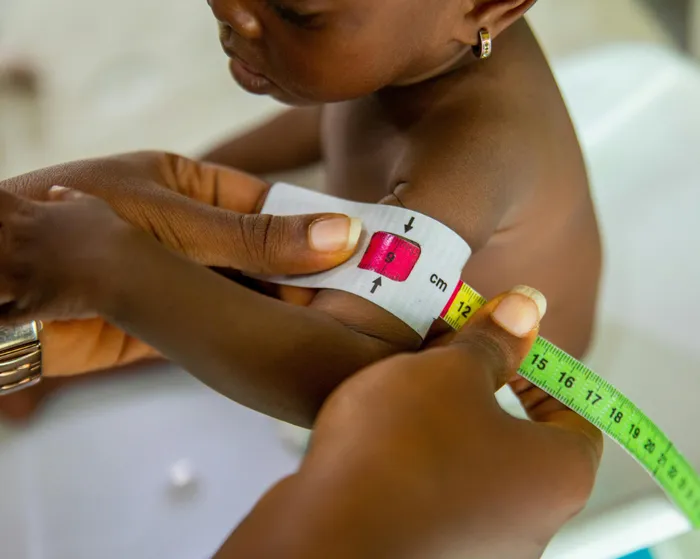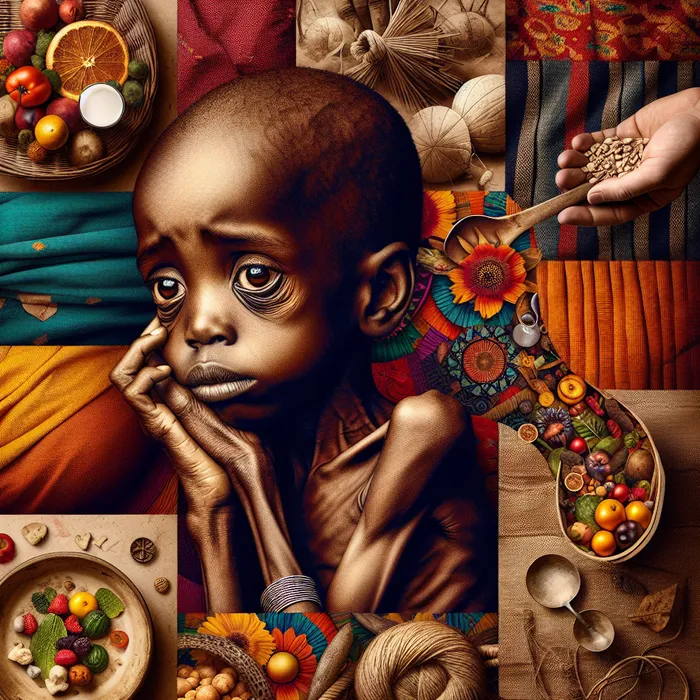Spotting severe malnutrition in children: essential tips for South African parents

23% of South African children under five are at risk of life-threatening malnutrition and related health complications.
Image: pexels
When a child’s ribs start showing or their energy suddenly drops, it’s easy to dismiss it as “just a phase”.
But in South Africa, health officials are warning that these could be early signs of severe acute malnutrition (SAM), a life-threatening condition that’s quietly affecting thousands of children every year.
The Gauteng Department of Health recorded more than 1 000 cases of SAM in the past financial year, with the highest numbers in Tshwane, Johannesburg, and Ekurhuleni.
“Even though malnutrition can be treated, many cases are only identified when children are already in severe distress,” spokesperson Motalatale Modiba told local media.
By the time a child is hospitalised, complications like hypoglycaemia, hypothermia, and sepsis may have set in. That’s why the department is urging parents and caregivers to report suspected cases immediately. Early detection and treatment dramatically reduce the risk of death and long-term damage.
According to Unicef’s Child Food Poverty: Nutrition Deprivation in Early Childhood (2023), South Africa is one of 20 countries that together account for 65% of children living in severe food poverty worldwide.
In fact, 23% of South African children under five are at risk of life-threatening malnutrition and related health complications.
“The consequences of severe child food poverty can last a lifetime,” says Christine Muhigana, Unicef South Africa Representative. Malnutrition weakens immune systems, increases the risk of dying from common infections, and interferes with brain development, a triple blow that can trap families in a cycle of poverty and poor health.
The South African Early Childhood Review 2024 (Children’s Institute, UCT & Ilifa Labantwana) shows how complex the problem really is. The country faces a “double burden” of malnutrition: both under- and overnutrition.
- Stunting: 27% (over 1.5 million) of children under five are too short for their age because of chronic undernutrition. Stunting is linked to developmental delays, poor school performance, and higher risks of obesity, diabetes, and hypertension later in life.
- Overweight: 13% (about 730,000 children) under five weigh more than two standard deviations above the median for their height. Paradoxically, this doesn’t always mean good nutrition; poor-quality diets high in sugar and low in micronutrients drive both overweight and hidden hunger.
- Severe Acute Malnutrition (SAM): The most immediate and visible form of malnutrition. In 2022/23, 15,000 children were hospitalised for SAM. New cases rose 33% between 2020/21 and 2021/22, with a further 20% increase by mid-2023. Tragically, the proportion of children who die after admission for SAM has also crept up, from 7.9% in 2020/21 to even higher levels today.
For every child with SAM, around 135 are affected by stunting. Even those who “recover” from early stunting often score lower on cognitive tests than their peers, reinforcing inequalities.

Malnutrition weakens immune systems, increases the risk of dying from common infections, and interferes with brain development, a triple blow that can trap families in a cycle of poverty and poor health.
Image: Ron
How to recognise the red flags
Doctors describe malnutrition as a deficiency, excess, or imbalance of nutrients. For parents, the signs can be more tangible:
- Sudden or extreme weight loss
- Swollen feet or face (sign of kwashiorkor)
- Persistent diarrhoea or repeated infections
- Lethargy or irritability
- Children who seem much shorter or smaller than others their age
Any of these symptoms warrants a visit to a clinic or hospital. “Timely intervention can save lives,” says Modiba.
The Lifelong Consequences of “hidden hunger”
Malnutrition isn’t just about being thin. According to the World Health Organisation (WHO), stunted children face delayed mental development, poor school performance, and reduced earning potential.
Wasting (acute undernutrition) impairs immunity, making infections like pneumonia or TB far more dangerous. Even overweight children are at higher risk of diabetes, cardiovascular disease, and certain cancers later in life.
Micronutrient deficiencies add another layer of harm:
- Iron deficiency: anaemia and fatigue
- Vitamin A deficiency: night blindness and weakened immunity
- Vitamin D deficiency: rickets and brittle bones
- Zinc deficiency: skin rashes and poor infection resistance
What can parents and communities do right now?
- Act quickly: If you suspect a child is malnourished, go to the nearest clinic or hospital. Free screening and treatment are available in public facilities.
- Monitor growth: Regularly check your child’s weight and height at well-baby visits. Ask nurses to explain growth charts.
- Feed diversity, not just quantity: Where possible, include a variety of foods, grains, fruits, vegetables, legumes, and proteins rather than relying on starches alone.
- Leverage community support: Report concerns to local health workers or NGOs. Community nutrition programmes and food parcels can be lifesavers.
Health officials in SA have urged parents and caregivers to seek medical help as soon as symptoms appear, stressing that timely intervention can save lives. Without urgent action, today’s undernourished toddlers could become tomorrow’s undereducated and chronically ill adults.